I have always been reticent about Nicolas Poussin’s paintings and even in Chantilly where I discovered the fabulous « Massacre des Innocents », which is considered as one of his masterpieces, I tended to be bored by his landscapes. Well, with this new exhibition at the Louvre of « Poussin et Dieu », and thanks to Guy de Compiègne’s new study « Nicolas Poussin, l’ambiguité recherchée » (Ed du Varulv), I had a new look and was fascinated.
As a trained architect Compiègne looks at paintings with a different eye than art historians. Nicolas Milovanovic, the curator of the show, said in a radio interview, Poussin is « the Raphaël of France » and expresses with great spirituality « a poetic synthesis between Christian tradition and Antiquity ». While in Rome, he painted at a time when Catholics were defending their faith against the Protestant Reform (1624-1630). Very close to the Pope, Poussin painted a large altarpiece for St Peter’s Basilica.
The Virgin carried by angels in her « Assumption », was painted on silk with indigo and is one of the most copied paintings in the world.
This exhibition which starts with a beautiful self portrait, “auto portrait de Chantelou” is devoted to 99 of Poussin’s religious work but he was also an erotic painter (Venus and Vulcain) and a great painter of architecture : « the way he draws monuments is amazing », says Compiègne. The correspondence between houses and temples, obelisks and churches, (Eliezer and Rebecca) roofs, stairs, round sculptures is completely architectural. The construction of his groups of people in the « Holy Family » and the movements of the crowd in the « Récolte de la Manne » painting are fascinating.
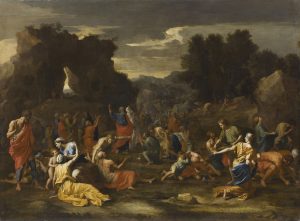
“La Manne ou Les Israélites recueillant la manne dans le désert.” 1638, was part of Louis XIV thés collection. RMN-Grand Palais (musée du Louvre) / Mathieu Rabeau
RMN-Grand Palais (musée du Louvre) / Mathieu Rabeau
In « Four seasons, Summer », the wheat fields are built in different heights just like the citadel behind them. The relationship between horses, people and constructions is only softened by the round leaves of trees in the forefront.
Like the Bleu Nattier or the Bleu Klein, le Bleu Poussin is rightly famous and you will discover in this show, many paintings that are striking especially when it is associated to yellow, green and red. I did come out of the Louvre with a new vision of Poussin. (Until June 29)
Share this Diary
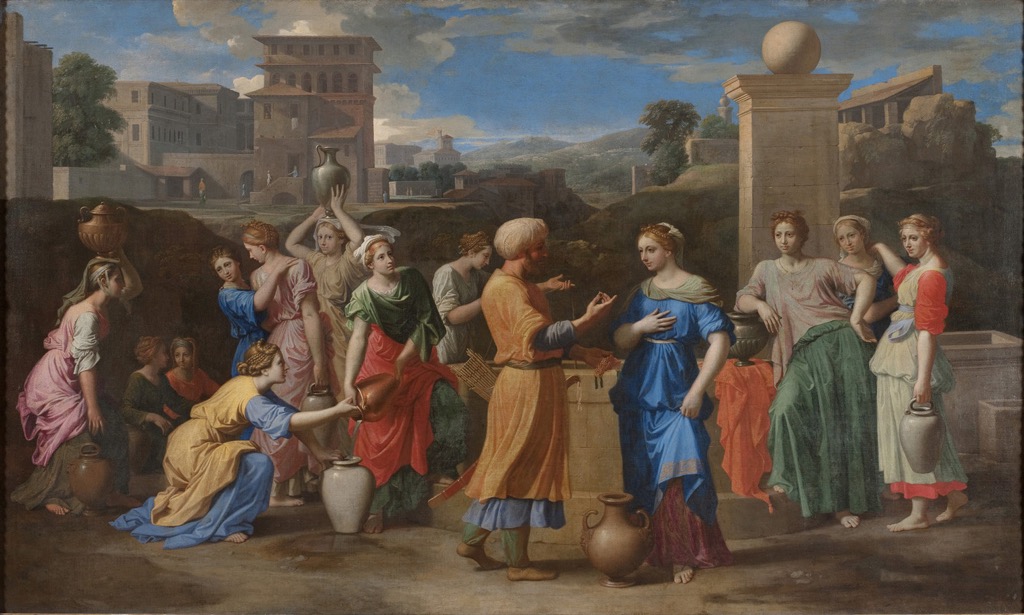
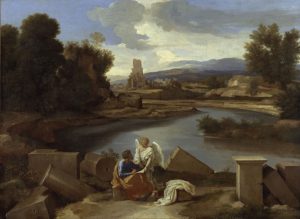
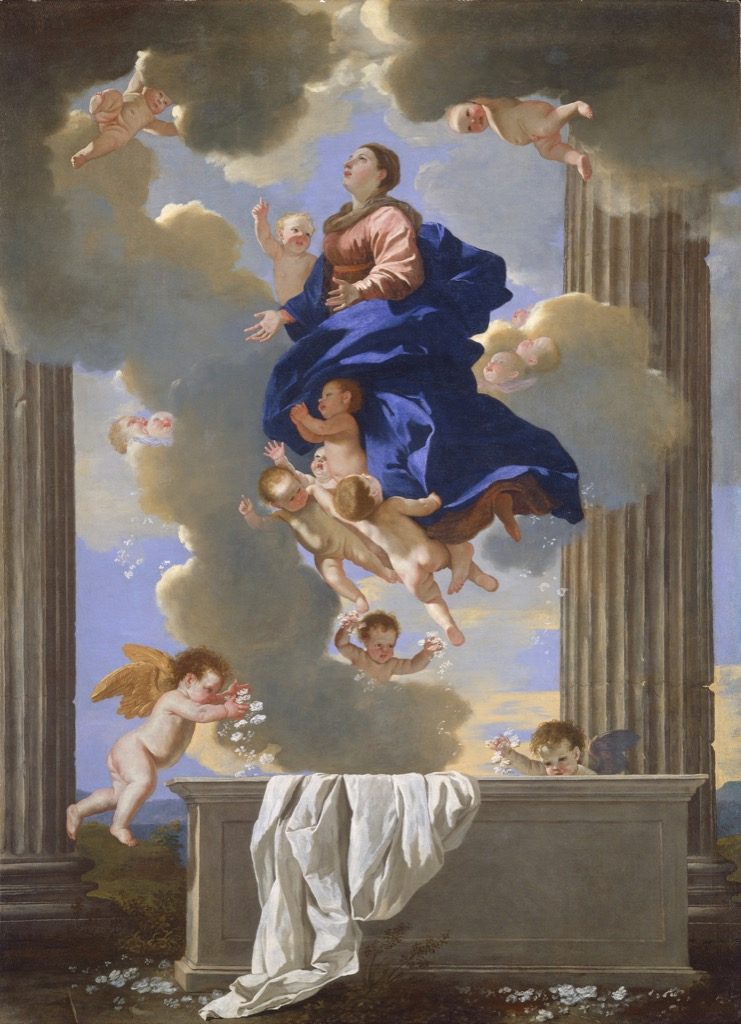
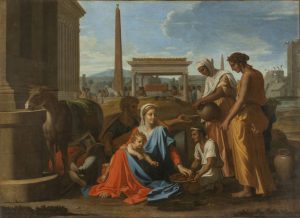
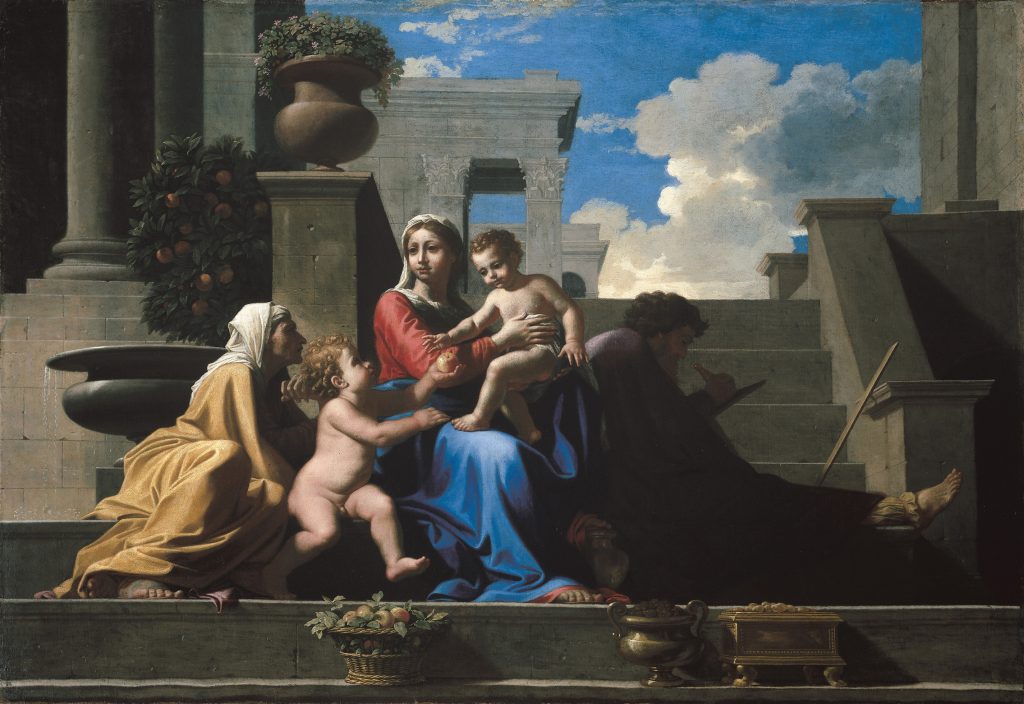
3 Comments on “Poussin and a few discoveries”
Thank you dear Laure, for your charming newsletter. A little whiff of Paris for all of us across the Atlantic and beyond. Well done! Annelyse
I especially welcomed your comments on Poussin. You have encouraged me to take a
second look. I may start with A Dance to the Music of Time since I have a reproduction of
that. Cheers, Vera
Bravo Laure for this detailed presentation of these ultimately utterly metaphysical paintings, Poussin as a forefather of de Chirico, in their ideal proportions, pure balance of color, light and shade ,and passionately still when representing movement.